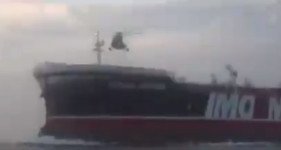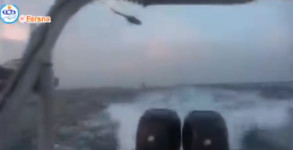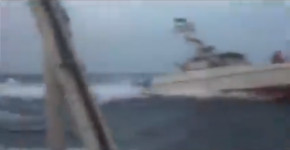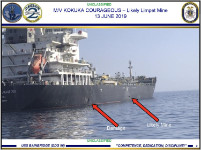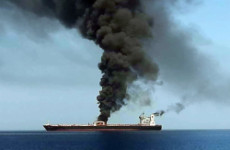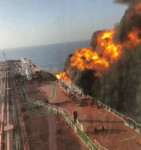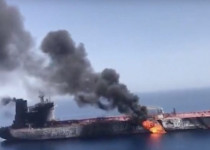 Comments and corrections welcome.
Comments and corrections welcome.
Evolving threat to tankers in Persian Gulf
 Iranian forces have long emphasized asymmetrical tactics in the Straits of Hormuz. The seizure of the British flagged tanker Stena Impero (IMO: 9797400) on 19th July 2019, and boarding of the MV Mesda (IMO: 9452672) the same day, serve as a reminder of the ease with which Iran’s Islamic Revolutionary Guards Naval forces (IRGC-N) can approach tankers and other merchant ships in the Straits.
Iranian forces have long emphasized asymmetrical tactics in the Straits of Hormuz. The seizure of the British flagged tanker Stena Impero (IMO: 9797400) on 19th July 2019, and boarding of the MV Mesda (IMO: 9452672) the same day, serve as a reminder of the ease with which Iran’s Islamic Revolutionary Guards Naval forces (IRGC-N) can approach tankers and other merchant ships in the Straits.
Although the boarding was conducted by fast-roping from a Mi-8 HIP helicopter, the tanker was first approached by multiple IRGC-N fast boats which placed themselves behind and on the port flank, i.e. the opposite side to the Iranian coast]:
THE book on Special Forces subs Covert Shores 2nd Edition. A world history of naval Special Forces, their missions and their specialist vehicles. SEALs, SBS, COMSUBIN, Sh-13, Spetsnaz, Kampfschwimmers, Commando Hubert, 4RR and many more.
Check it out on Amazon
Boarding is the least of tanker’s worries however. The seizure of Stena Impero is a specific UK-Iran topic motivated by Iran’s desire to retaliate for the seizure of Grace 1 in Gibraltar. The greater threat comes from limpet mines, and Iran has developed new tactics to employ them against moving targets.
The 13th June attacks on two tankers near the Persian Gulf represent a new threat to shipping in these globally important shipping lanes. Two limpet mines were placed on each vessel (Front Altair and Kokuka Courageous) from a small boat. Limpet mines, by both tradition and design, are supposed to be attached below the waterline to maximize destruction. They use powerful magnets to cling to the ship's hull below the waterline and punch a hole in the steel plate and buckle internal bulkheads causing flooding, and ultimately sinking.
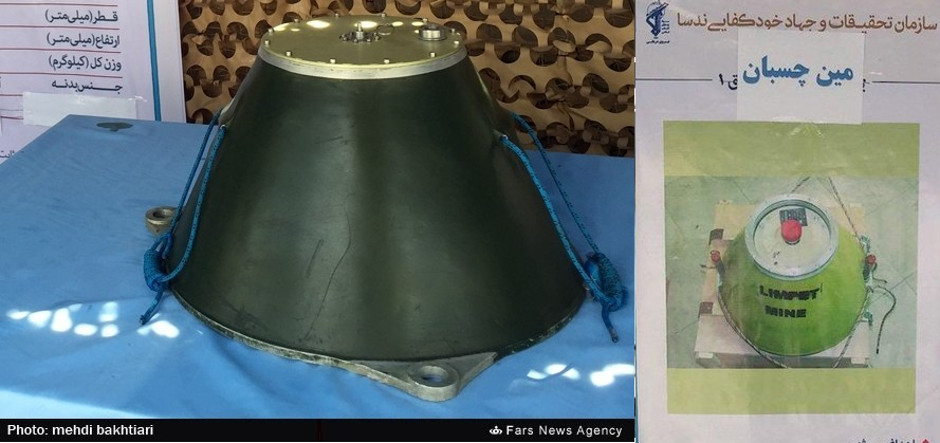
Modern tankers, by virtue of their size and construction, are not particularly vulnerable to diver-carried limpet mines however. There is only so much explosives that a diver can swim with. The attacks on four tankers at Fujairah on 12th involved below-waterline placement of the mines, although underwater drones have also been suggested. Damage was modest.
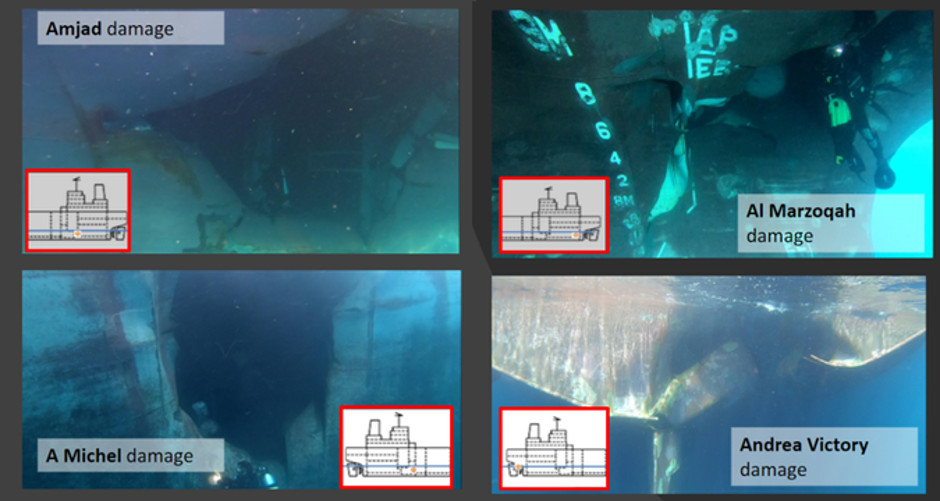
Placing a limpet mine beneath the waterline on a moving target isn't a viable tactic because of the flow of water. So the new tactic is improvised. It would however leave less evidence than rocket, torpedo or larger mine attacks. When placed above the waterline they are unlikely to cause serious flooding, but fire is a possibility as the Front Altair shows.
Iran's Revolutionary Guard (IRGC) routinely inspects international shipping movements from speedboats, frequently getting close enough to read the name. This practice verifies radar, radio and automatic identification system (AIS) credentials broadcasted by the ships, and sends the clear message that Iran could strangle the world's oil supply at this vulnerable choke point. There is very little that a civilian tanker can do to prevent contact, even when the Threat Level is at critical. A month after the above-waterline limpet mine attacks the Royal Navy frigate HMS Montrose used tactics to deter Iranian boats getting close to the British tanker British Heritage (IMO: 9682980). The July 19th incidents demonstrate that there are not enough escort vessels in the Straits to meet every approach.
Get The essential guide to World Submarines
This Covert Shores Recognition Guide Covers over 80 classes of submarines including all types currently in service with World Navies.Check it out on Amazon
These inspections are routine and could provide cover for placing the mines.
The attacks went wrong however. One of the mines on
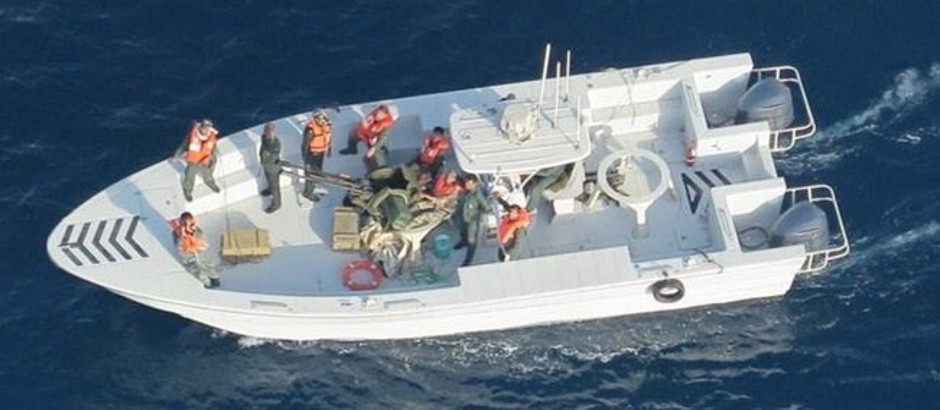
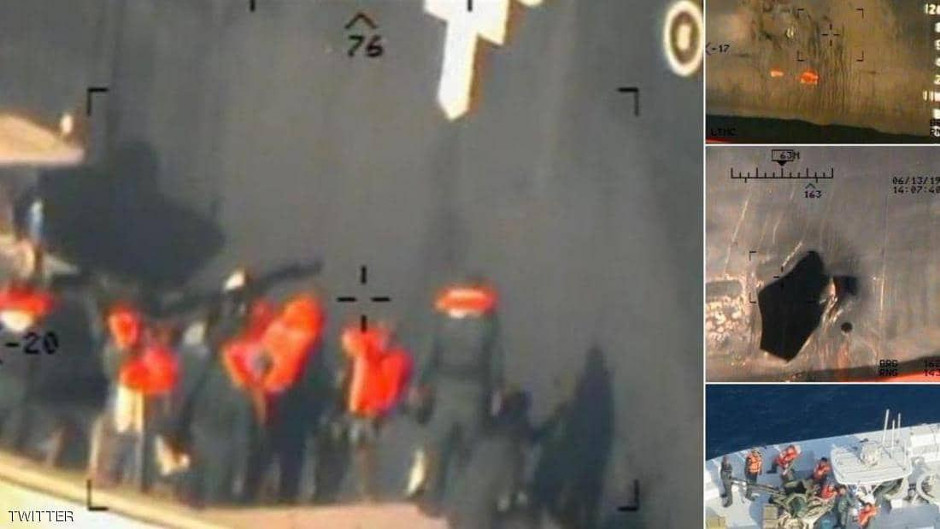
Related articles (Full index of popular Covert Shores articles)

 Iranian Fateh Class SSK
Iranian Fateh Class SSK

 North Korean Gorae Class SSB
North Korean Gorae Class SSB

 Iranian Nahang Class midget sub
Iranian Nahang Class midget sub

 North Korean MS-29 YONO Class midget sub. w/Cutaway
North Korean MS-29 YONO Class midget sub. w/Cutaway

 Mignatta first human torpedo
Mignatta first human torpedo

 Decima MAS attack on New York 1943 (CA Class)
Decima MAS attack on New York 1943 (CA Class)


 EMT FWS-1 to -5 Barracuda SDVs
EMT FWS-1 to -5 Barracuda SDVs


 Taedong-B 'Kajami' ('Zulfikar') submersible boat
Taedong-B 'Kajami' ('Zulfikar') submersible boat

 Al-Sabehat 15 Swimmer Delivery Vehicle and related development
Al-Sabehat 15 Swimmer Delivery Vehicle and related development
 Explosive Boats world history
Explosive Boats world history


 CCH (Combat Craft Heavy) SEALION and Alligator Semi-Submersible Boats. w/Cutaway
CCH (Combat Craft Heavy) SEALION and Alligator Semi-Submersible Boats. w/Cutaway




 World survey of Special Operations Craft
World survey of Special Operations Craft

 WP-18 Tactical Strike Craft
WP-18 Tactical Strike Craft
 Special Forces Jet Skis
Special Forces Jet Skis

